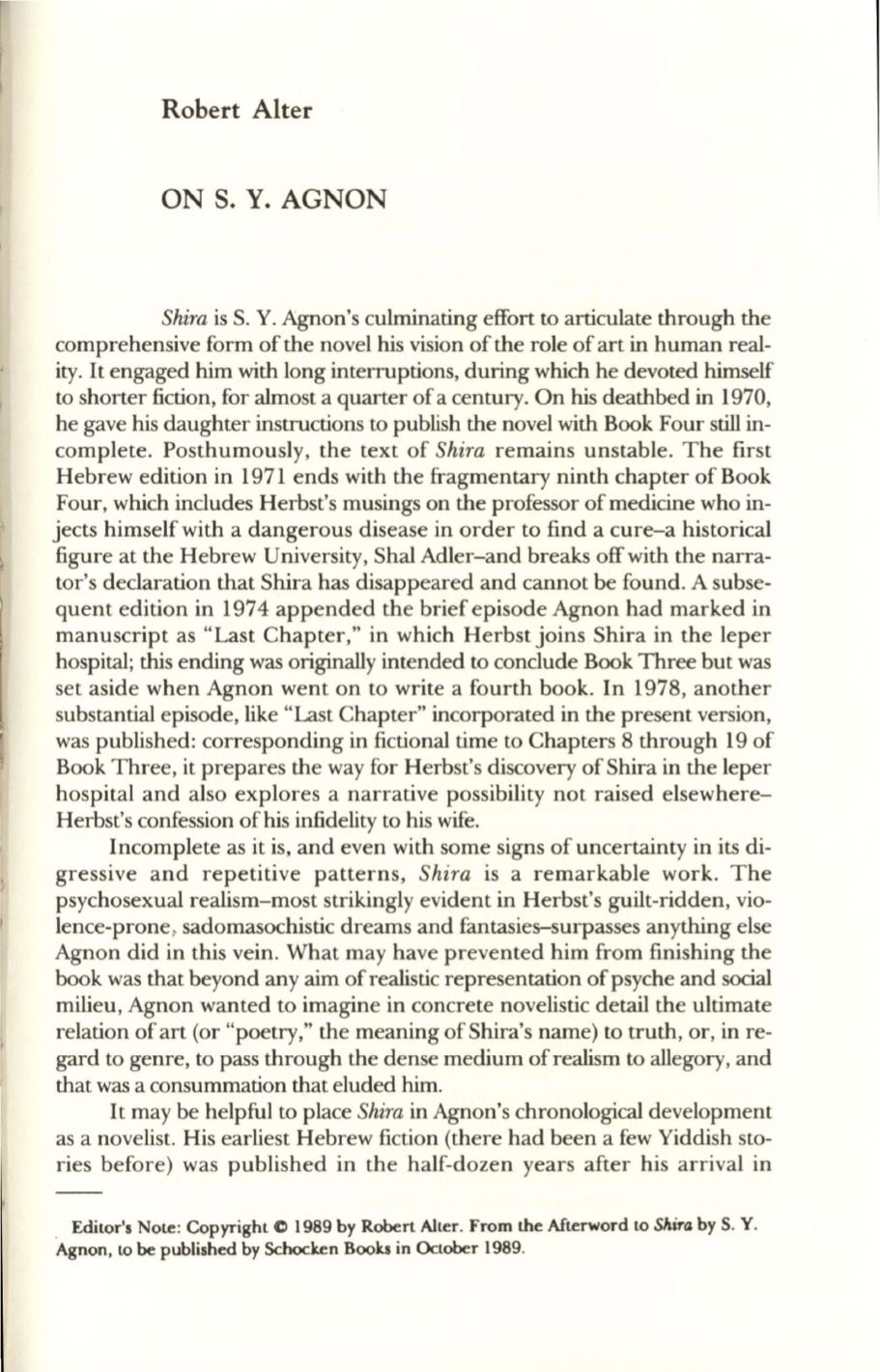
Robert Alter
ON S. Y. AGNON
Shira
is S. Y. Agnon's culminating effort to articulate through the
comprehensive form of the novel his vision of the role of art in human real–
ity. It engaged him with long interruptions, during which he devoted himself
to shorter fiction, for almost a quarter ofa century. On his deathbed
in
1970,
he gave his daughter instructions to publish the novel with Book Four still
in–
complete. Posthumously, the text of
Shira
remains unstable. The first
Hebrew edition in 1971 ends with the fragmentary ninth chapter of Book
Four, which includes Herbst's musings on the professor of medicine who
in–
jects himself with a dangerous disease in order to find a cure-a historical
figure at the Hebrew University, Shal Adler-and breaks off with the narra–
tor's declaration that Shira has disappeared and cannot be found. A subse–
quent edition in 1974 appended the brief episode Agnon had marked in
manuscript as "Last Chapter," in which Herbst joins Shira in the leper
hospital; this ending was originally intended to conclude Book Three but was
set aside when Agnon went on to write a fourth book. In 1978, another
substantial episode, like "Last Chapter" incorporated in the present version,
was published: corresponding in fictional time to Chapters 8 through 19 of
Book Three, it prepares the way for Herbst's discovery of Shira in the leper
hospital and also explores a narrative possibility not raised elsewhere–
Herbst's confession of his infidelity to his wife.
Incomplete as it is, and even with some signs of uncertainty in its di–
gressive and repetitive patterns,
Shira
is a remarkable work. The
psychosexual realism-most strikingly evident in Herbst's guilt-ridden, vio–
lence-prone, sadomasochistic dreams and fantasies-surpasses anything else
Agnon did in this vein. What may have prevented him from finishing the
book was that beyond any aim of realistic representation of psyche and social
milieu, Agnon wanted to imagine in concrete novelistic detail the ultimate
relation of art (or "poetry," the meaning of Shira's name) to truth, or, in re–
gard to genre, to pass through the dense medium of realism to allegory, and
that was a consummation that eluded
him.
It may be helpful to place
Shira
in Agnon's chronological development
as a novelist. His earliest Hebrew fiction (there had been a few Yiddish sto–
ries before) was published in the half-dozen years after his arrival in
. Edilor's NOle: Copyrighl C 1989 by Roberl Aller. From the Mlerword lO
ShiTa
by S. Y.
Agnon, lO
be
published by Schocken Books in Oclober 1989.


